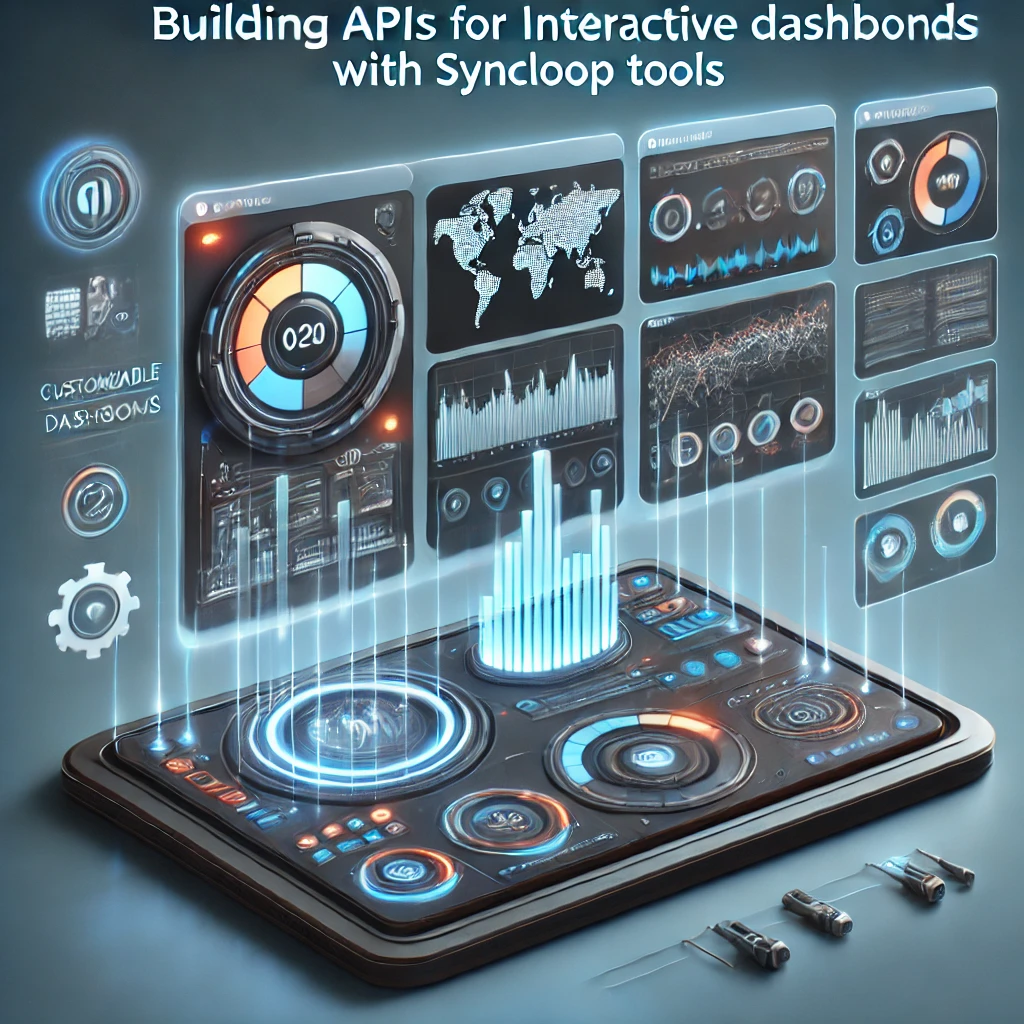Building APIs for Interactive Dashboards with Syncloop Tools

Importance of APIs for Interactive Dashboards
APIs are essential for interactive dashboards because they enable:
- Real-Time Data Updates: Keep dashboards current with the latest information.
- Dynamic Filtering and Queries: Allow users to interact with data through filters, drill-downs, and queries.
- Seamless Integration: Connect multiple data sources for a unified view.
- Scalability: Handle increasing data volumes and user interactions efficiently.
Syncloop simplifies the process of building and managing these APIs, ensuring robust performance and scalability.
Key Features of Syncloop for Dashboard APIs
1. Workflow Automation
Syncloop’s workflow automation tools, like Ifelse and Await, streamline the processing of complex queries and data manipulations for dashboards.
2. Real-Time Monitoring
Track API performance and data flow in real time, ensuring smooth operation of dashboard functionalities.
3. Data Transformation
Use Transformers to reformat and prepare data for visualization, ensuring compatibility with dashboard tools.
4. Dynamic Query Handling
Handle dynamic user queries efficiently, providing personalized and context-aware data updates.
5. Scalable Infrastructure
Syncloop’s scalable gateways support high user interaction rates and large data volumes, ensuring dashboards remain responsive.
6. Error Recovery
Implement robust error handling with Redo controls and fallback workflows, ensuring uninterrupted data delivery.
Steps to Build Dashboard APIs with Syncloop
Step 1: Identify Data Sources
Determine the data sources required for your dashboard, such as:
- Databases (SQL or NoSQL)
- Third-party APIs
- IoT devices
- File systems
Step 2: Design API Endpoints
Create Syncloop API endpoints for fetching, aggregating, and transforming data. Examples include:
- /dashboard/summary for high-level metrics.
- /dashboard/details for drill-down data.
- /dashboard/filters for dynamic filter options.
Step 3: Automate Data Workflows
Leverage Syncloop’s automation tools to design workflows for fetching and processing data. For example:
- Use Await to aggregate data from multiple sources.
- Use Ifelse to apply conditional logic based on user queries or roles.
Step 4: Transform Data for Visualizations
Use Transformers to prepare data for visualization libraries like D3.js, Tableau, or Power BI. Common tasks include:
- Aggregating time-series data.
- Normalizing values for consistency.
- Converting data formats like JSON to CSV or XML.
Step 5: Enable Real-Time Updates
Configure Syncloop’s event-driven workflows to push updates to the dashboard in real time, ensuring users always see the latest data.
Step 6: Monitor and Optimize
Use Syncloop’s real-time monitoring tools to track API usage and performance metrics. Optimize workflows to improve response times and handle peak traffic efficiently.
Real-World Applications
1. Business Intelligence Dashboards
Provide real-time metrics on sales, marketing, and operations, enabling executives to make informed decisions.
2. Healthcare Dashboards
Deliver patient data, diagnostics, and treatment updates to healthcare professionals in real time.
3. E-Commerce Analytics
Showcase metrics like conversion rates, inventory levels, and customer behavior for e-commerce businesses.
4. IoT Monitoring Dashboards
Display sensor data and analytics for smart homes, factories, and agricultural systems.
Best Practices for Dashboard APIs
- Optimize Queries: Design APIs to fetch only the data required for specific visualizations, reducing response times.
- Implement Caching: Cache frequently accessed data to minimize redundant processing.
- Enable Dynamic Filtering: Allow users to apply filters and drill-downs dynamically through API calls.
- Monitor Continuously: Use Syncloop’s tools to track API performance and resolve bottlenecks.
- Secure APIs: Protect endpoints with token-based authentication and encrypted communication.
Why Choose Syncloop for Dashboard APIs?
Syncloop’s advanced tools for workflow automation, real-time monitoring, and data transformation make it an ideal platform for building APIs for interactive dashboards. Its scalable infrastructure ensures robust performance, even under high traffic, while its intuitive interface simplifies API development and management.
Conclusion
Interactive dashboards rely on well-designed APIs to deliver real-time insights and seamless user interactions. Syncloop provides the tools to create robust, scalable, and efficient APIs that enhance dashboard functionality. Whether you’re building dashboards for business intelligence, healthcare, or IoT, Syncloop ensures your APIs deliver exceptional performance and user experiences.
Back to Blogs